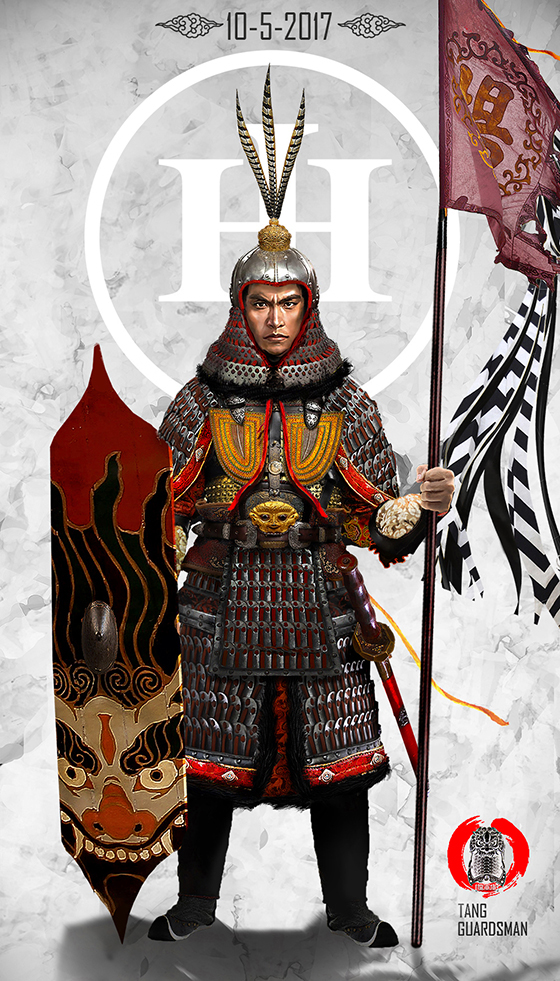UNIT: TANG DYNASTY GUARDSMAN 唐卫兵
Tang dynasty soldier in heavy lamellar armor- the winged cheekpieces designate that he is from the late Tang dynasty.

Tang imperial guards depicted on the tomb relief of Li Chongrun, Crown Prince Yide, the son of Emperor Zhongzong and the infamous Empress Wei. Prince Li Chongrun- who never ascended the throne was forced to commit suicide by his grandmather, Empress Wu Zetian.
The honor guards of Crown Prince Yide, on his tomb relif, AD 706. Note the black and white cheveron stripped pennons. The black and white chevron stripes predates that of the Tang dynasty and was seen as early as the Northern Wei and Northern Qi period, likely a pattern originated from the steppe cultures of the north, nonetheless the Tang incorporated the motif and became a fixture of Tang dynasty armies.

☯☯☯☯☯
For more about the Tang military, please check out my
other Tang dynasty pieces.

TOPICS: Tang Military Overview, Tang Dynasty Cavalry, Tang Imperial Guards, Tang Tiger Crown Troops,
UNITS: Tang Imperial Officer, Tiger Crown Cavalry, Tang Imperial Guards, Tang Heavy Cavalry
UNITS: Tang Imperial Officer, Tiger Crown Cavalry, Tang Imperial Guards, Tang Heavy Cavalry
→ ☯ [Please support my work at Patreon] ☯ ←
Thank you to my Patrons who has contributed $10 and above:
You helped make this happen!
➢ ☯ Stephen D Rynerson
➢ ☯ SRS (Mr. U)



















Comments
The famous Yang clan of the Song Dynasty, legendary. What were the other clans?
Truth be told, the situation at the end of the Tang China is somewhat similar to Japan before the Gempei War and the Sengoku era- the central court virtually has no authority and the regional military governors virtually has total autonomy in their region: The Jiedushi class- military governors could have almost became like the samurai.
https://en.wikipedia.org/wiki/Jiedushi
The Jiedushi were in all matters hereditary warlords with hereditary domains/ fiefs, but their followers are still organized like mini kingdoms where the central clan's rule is absolute and the hierarchies below are under their total control- without a specific class of warrior- aristocrats (samurai) ruling specific local domains autonomously.